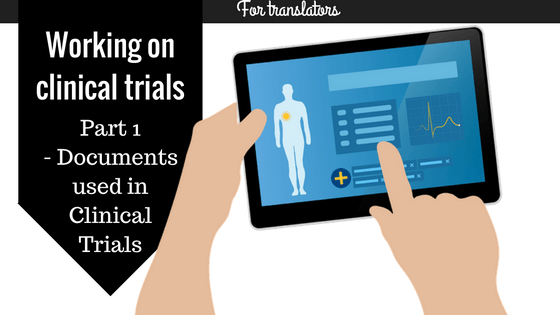Medizinische Übersetzer*innen und Dolmetscher*innen werden sowohl im klinischen als auch im wirtschaftlichen Bereich benötigt. Normalerweise müssen sie einen Studienabschluss in Übersetzung oder in Fremdsprachen mit Spezialisierung Medizin nachweisen können, aber es gibt auch zweisprachige Mediziner*innen, welche im medizinischen Bereich als Übersetzer*innen oder Dolmetscher*innen arbeiten. Ein*e Dolmetscher*in übersetzt in Echtzeit Konversationen oder gesprochene Aussagen, während ein*e Übersetzer*in mit Dokumenten und schriftlichen Berichten arbeitet. Henter & Asociados fokussiert auf die Arbeit als Übersetzer.
Medizinische Dolmetscher*innen arbeiten üblicherweise in
– Zahnarztpraxen
– ambulanten Pflegeeinrichtungen
– Spitälern
– Zentren für medizinische Bildgebung
– psychiatrischen Kliniken
– Pflegeheimen und Langzeitpflegeeinrichtungen
– Arztpraxen und Gruppenarztpraxen
– chirurgischen Kliniken
Medizinische Übersetzer*innen sind normalerweise auf ein bestimmtes Feld spezialisiert (zum Beispiel pharmazeutische Forschung, medizinische Geräte, medizinische Veröffentlichungen, Gesundheitswesen et cetera) und können verantwortlich sein für die Übersetzung von:
– Anwendungen, Apps
– Klinische Studiendokumentationen
– Gebrauchsanweisungen für medizinische Geräte
– pharmakologische Anweisungen
– ärztliche Diagnosen
– Berichte
– schriftliche Patienteninformationen
Nebst der nötigen linguistischen Ausbildung ist auch ein tieferes Verständnis von spezifischer medizinischer Terminologie unabdingbar. In einigen Staaten gibt es explizite Verfahren, um medizinische Übersetzer*in oder Dolmetscher*in zu werden. In den USA beispielsweise kann man sich vom National Board of Certification for Medical Interpreters zertifizieren lassen. In Europa bieten einige Universitäten Spezialisationen während des Studienganges oder Langzeitprogramme an. Hier sind einige Beispiele in Europa:
– Universitat Jaume I, Barcelona
– Barcelona School of Management, Barcelona
– Université Claude Bernard Lyon 1, Lyon
– University College London, London
Das Programm „Bridging the Gap“ beinhaltet einen 40-stündigen Einführungskurs an verschiedenen Orten sowohl in den USA als auch international. Der Kurs wird vom Cross Cultural Health Care Program organisiert. Organisationen wie IMIA, Tremédica oder EMWAinformieren auch über offizielle und weiterführende Ausbildungen.
Wenn es an Ihrem Wohnort keine offizielle Möglichkeit gibt, sich zertifizieren zu lassen, oder Sie bereits zertifiziert sind, sich aber selbst in Ihrem Fachgebiet weiterbilden möchten, könnten Sie an den folgenden Möglichkeiten interessiert sein, die Sie online und kostenlos nutzen können:
- A Glimpse into Occupational Health and Safety
- A Nurse’s Guide to Children’s Agricultural Safety
- Active Learning with Technology: Myths, Magic and Mucho Motivation
- Acute and Chronic Rhinosinusitis: A Comprehensive Review
- Adolescent Involvement in HIV Prevention Trials
- Advanced circulatory system physiology
- Advanced endocrine system physiology
- Advanced gastrointestinal physiology
- Advanced hematologic system physiology
- Advanced muscular-skeletal system physiology
- Advanced nervous system physiology
- Advanced Neurobiology I
- Advanced respiratory system physiology
- After-Action Report, a fillable chart for Public Health Performance Evaluation
- Ageing Well: Falls
- AIDS: Fear and Hope
- Air Quality and Environmental Noise
- Alzheimer’s Disease 101
- An Introduction to Global Health
- An Introduction to Population Health
- An Introduction to the U.S. Food System: Perspectives from Public Health
- Analysis and Interpretation of Public Health Data, Part 1
- Analysis and Interpretation of Public Health Data, Part 2
- Anatomy of the Abdomen and Pelvis; a journey from basis to clinic
- Anatomy: Know Your Abdomen
- Antimicrobial resistance – theory and methods
- Antimicrobial Stewardship: Managing Antibiotic Resistance
- Antimicrobial Stewardship: Optimization of Antibiotic Practices
- Application of Surveillance Principles to Food Safety
- Applying Ethical Frameworks during Severe Pandemic Influenza
- Autism 101
- Autism and Related Disorders
- Autism Spectrum Disorder
- Bacteria and Chronic Infections
- Basic Biostatistics Concepts and Tools
- Basic Emergency Preparedness for Staff of Community Health Facilities
- Basic Food Safety
- Basic Infectious Disease Concepts in Epidemiology
- BBC Inside Health
- Best Management Practices for Animal Research Worker Safety
- Better Conversations with Aphasia
- Beyond ‚Add and Stir‘: Engaging Diversity in College Classrooms
- Bioelectricity: The Mechanism of Origin of Extracellular Potentials
- Bioprinting: 3D Printing Body Parts
- Building Bridges across the Professions: Promoting Successful Intraprofessional Collaborations
- Can Champions Be Made?
- Cancer and Medical Terminology
- Cancer Clinical Trials: Practical Tips to Improve Asian American Participation (CME)
- Cardiovascular Responses to Exercise
- Career 911: Your Future Job in Medicine and Healthcare
- Caries Management by Risk Assessment (CAMBRA)
- Case Studies in Personalized Medicine
- Cause and Effect in Epidemiology
- Chemical Hazard Awareness for Public Health Workers
- Child Abuse Recognition, Investigation, and Protection
- Child Care and School Environments: Settings for Obesity Prevention among Youth
- Child Survival
- Childbirth: A Global Perspective
- Childhood Obesity 101
- Climate Change and Health
- Clinical Kidney Transplantation
- Clinical Management of HIV
- Clinical Research Training On-Line
- Closed POD (Point of Dispensing) Partnership Training
- Collaboration and Communication in Healthcare: Interprofessional Practice
- Communicating with Patients after Adverse Events
- Community Change in Public Health
- Community Change in Public Health
- Community Health Nursing
- Community Healthcare Disaster Planning in Minnesota
- Compassionate Care: Getting it Right
- Confronting Gender Based Violence: Global Lessons for Healthcare Workers
- Congenital Hypothyroidism: What Every Primary Care Provider Needs to Know
- Contact Investigation (Public Health Emergency Training Series)
- Control Strategies for Chemical or Biological Hazards
- Control Strategies for Physical Hazards
- Crisis Code: Teaching Crisis Management Skills to Enhance Management of Advanced Cardiac Life Support
- Crisis Intervention during Disaster (Public Health Emergency Training Series)
- Cross-Cutting
- Cultural Diversity, Health Disparities, and Public Health
- Culture and Health Literacy: Beyond Access
- Culture and Health Literacy: Case Studies
- Current events in health and medicine
- Decontamination (Public Health Emergency Training Series)
- Dementia and Diversity in Primary Care: A Primer – Guidelines, Ethnic Differences, and Assessments
- Dementia and Diversity in Primary Care: Latino Populations
- Design and Interpretation of Clinical Trials
- Detecting Bioterror (Forensic Epidemiology)
- Diabetes – a Global Challenge
- Diabetes 101
- Dignity and Respect
- Disaster 101: An immersive emergency preparedness and crisis leadership workshop
- Disaster Behavioral Health
- Disaster in Franklin County: A Public Health Simulation
- Disaster Sanitation
- Disease Surveillance (Public Health Emergency Training Series)
- Diversity and Succession Planning
- Domestic Violence 101
- Drug and Alcohol Abuse
- Drug Discovery, Development & Commercialization
- Drugs in Fitness and Sport – Clean or Jerk?
- During and After a Disaster
- Ebola : Vaincre ensemble!
- Ebola Virus Disease: An Evolving Epidemic
- Ebola: Essential Knowledge for Health Professionals
- ECG Assessment: an Introduction for Healthcare Providers
- Economy and Health: What is the Role of Public Health?
- EHO-Air Supply and Pollution
- EHO-Food Safety
- EHO-Housing
- EHO-Introduction to Environmental Health Online
- EHO-Land
- EHO-Pest Control
- EHO-Water Supply and Waste Water
- EHO-Workplace
- Elderly Patient Advocate
- Eliminating Trachoma
- Emergency Animal Sheltering
- Emergency Management and Preparedness Planning for Community Health Center Leaders
- Emergency Preparedness Training for Hospital Clinicians
- Endocrine system diseases
- Engaging Communities in Public Health Research, Practice and Policy
- Environmental Justice
- Environmental Public Health Tracking 101 (Tracking 101)
- Epidemic! (An online game)
- Epidemics in Western Society Since 1600
- Epidemiologic Methods II
- Epidemiology and Control of Infectious Diseases
- Epigenetic Control of Gene Expression
- Ethical and Social Challenges of Genomic and Precision Medicine
- Ethical Challenges in Public Health Interventions: Catastrophic and Routine
- Ethics and Public Health in an Age of Terrorism
- Evaluating Childhood Obesity Policy Impact In School Settings
- Executive systems of the brain
- Family Disaster Planning
- Family Planning and Reproductive Health
- Fixing Healthcare Delivery
- Food Protection
- Forensic Psychology: Witness Investigation
- Foundations for Assisting in Home Care
- Foundations for Global Health Responders
- Foundations of Public Health
- From Research to Practice: Connecting Principles of ‚Smart Teaching‘ to Emergency Preparedness and Beyond
- Fundamentals of Clinical Trials
- Fundamentals of Clinical Trials – Online Training
- Fundamentals of Patient Safety
- Fundraising 101
- Gastrointestinal system diseases
- Gender and Health
- General Environmental Health
- Genomic Medicine: Transforming Patient Care in Diabetes
- Genomic Technologies in Clinical Diagnostics: Molecular Techniques
- Genomic Technologies in Clinical Diagnostics: Next Generation Sequencing
- Genomics: The Connection to Public Health Practice
- Global Adolescent Health
- Global Health and Humanitarianism
- Global Health: An Interdisciplinary Overview
- Global Outbreak: A Public Health ICS Simulation
- Global Perspectives on Sexual and Reproductive Health and Rights (SRHR)
- GlobalHealthX.1: The Practitioner’s Guide to Global Health – Part 1: The Big Picture
- GlobalHealthX.2: The Practitioner’s Guide to Global Health-Part 2: Preparation and On The Ground
- GlobalHealthX.3: The Practitioner’s Guide to Global Health – Part 3: Reflection
- Good Brain, Bad Brain: Drug Origins
- Good Brain, Bad Brain: Parkinson’s disease
- Good Clinical Practice (GCP)
- Good Clinical Practice Training
- Good Distribution Practice Training
- Good Manufacturing Practice Training
- Good Pharmacovigilance Practice Training
- Good Research Practice (developed by MRC Head Office)
- Hazardous Materials
- HazMat Transportation Incidents: Using the Emergency Response Guidebook
- Healers‘ Healing and Resiliency in the Aftermath of Disaster
- Health care system
- Health for All through Primary Health Care
- Health in Numbers: Quantitative Methods in Clinical & Public Health Research
- Health Informatics on FHIR
- Health Policy/Ethics
- Health Promotion and Adult Education
- Health Systems
- Health Technology Assessment
- Health/Wellness Capstone Project
- Healthcare Delivery Providers
- Healthcare Marketplace
- Healthcare Marketplace Capstone
- Hematologic system diseases
- History of Occupational Health and Safety
- History of Terrorism
- HIV Vaccine Trials
- HIV/AIDS
- HIV: Prevention, Diagnosis, Treatment
- Housing Sanitation and Safety
- How to Avoid Injury and Illness
- Human anatomy and physiology
- Human Factors and Safety
- Immigrant Health Online Module
- Implementing Incident Management in Your Health Care Facility
- Improve Departmental Processes with the Public Health Performance Evaluation Primer
- Improving Access to Mental Health Services: The Affordable Care Act
- Improving Team Performance in a Public Health Response
- Improving Your Image: Dental Photography in Practice
- Infection Prevention in Nursing Homes
- Infectious diseases
- Infectious Diseases
- Informed Consent
- Innovating Solutions for Aging Populations
- Inside Cancer: How Genes Influence Cancer Development
- Institutions and Licensed Establishments
- Instructional Methods in Health Professions Education
- Integrative Global Leadership: Leading Across Boundaries for the Common Good
- Interprofessional Healthcare Informatics
- Intro to Statistics
- Introducción a la Salud Pública
- Introduction to Biostatistics
- Introduction to Biostatistics 2: Variables
- Introduction to Breast Cancer
- Introduction to Business Continuity Planning for Disasters and Emergencies
- Introduction to Cataract Surgery
- Introduction to Dental Medicine
- Introduction to Diagnostic Medical Parasitology
- Introduction to Epidemiology
- Introduction to Ethical Frameworks for Public Health Emergencies and Disasters
- Introduction to Healthcare Information Systems
- Introduction to Management in Public Health
- Introduction to Patient Safety
- Introduction to Population Health
- Introduction to Public Health
- Introduction to Research Ethics
- Introduction to Systematic Review and Meta-Analysis
- Introduction to the Biology of Cancer
- Introduction to the Culture of Safety
- IRAS
- Isolation and Quarantine (Public Health Emergency Training Series)
- Issues and Trends in Occupational Health and Safety
- It’s More than Money: Making the Business Case for Occupational Health and Safety
- Lab values and concentrations
- Leading Healthcare Quality and Safety
- Literature and Mental Health: Reading for Wellbeing
- Liver Transplant: the Ins and Outs
- Logistics: Strike Teams, Asset Management and Supply Distribution
- Long-term Care Facilities: Emergency Preparedness Plans
- Major Depression in the Population: A Public Health Approach
- Making Babies in the 21st Century
- Malaria and Alzheimer Diseases
- Managing Shoulder Pain in the Clinic: What to Look for and When to Intervene
- Mass Dispensing Sites: A Primer for Volunteers
- Mass Dispensing: A Primer for Community Leaders
- Mass Fatalities (Public Health Emergency Training Series)
- Maternal Health
- Measuring and Valuing Health
- Measuring Health Disparities (DL) MHDID0806
- Medical Humanity: Engaging Patients and Communities in Healthcare
- Medical Neuroscience
- Medical Technology and Evaluation
- Medical Terminology
- Medical Terminology 101
- Mental health
- Minnesota Disaster Response: Lessons Learned in 2007
- Minnesota Responds Medical Reserve Corps: An Online Orientation for Volunteers
- Moving Beyond HSEEP (Homeland Security Exercises and Evaluation Program), creating well- functioning teams for preparedness response
- Muscular-skeletal diseases
- NCLEX-RN practice
- Neonatal Health
- Nervous system diseases
- NeuroID ELearning
- NIMS (National Incident Management System) and ICS (Incident Command System): A Primer for Volunteers
- NORA Symposium: Occupational Health of Immigrant Workers: Reducing the Disparities
- NUTR101x: Nutrition and Health Part 1: Macronutrients and Overnutrition
- Nutrition 101
- Nutrition and Wellbeing
- Occupational Safety and Health
- Oh, the Places you’ll go: Providing Care in Non-Traditional Settings during an Emergency
- One Health 101
- Online Behavioral Interventions
- Online Medical Terminology Course
- Operationalizing Quality Improvement in Public Health
- Optimizing Antimicrobial Therapy with Timeouts
- Outbreak at Watersedge
- Outstanding Physical Education Lessons
- Palliative Care: Making it Work
- Personal and Family Emergency Preparedness
- Personal Preparedness
- Personal Safety and Health for Emergency Responders
- Perspectives on Disability
- Pharmaceutical and Medical Device Innovations
- Planning and Budgeting for Public Health: Part I – The Business Plan
- Planning and Budgeting for Public Health: Part II – The Budget
- Planning for and Engaging Special Populations in Emergency Preparedness
- PODs (Points of Dispensing): Public Health Training for Staff and Volunteers
- Point of Dispensing Planning: Training in a Virtual World
- Potable Water
- Preparedness & Community Response to H1N1
- Preparedness & Community Response to Pandemics
- Preparing Employees for a Disaster in the Workplace
- Prescription Drug Misuse and Addiction: Compassionate Care for a Complex Problem
- Preventing Chronic Pain: A Human Systems Approach
- Preventing the Zika Virus: Understanding and Controlling the Aedes Mosquito
- Program Development
- Program Evaluation
- Protecting Our Food System from Intentional Attack
- Psychological First Aid
- Psychological First Aid (PFA) Tutorial Mobile App
- Psychological First Aid: A Minnesota Community Supported Model
- Public Health Policy and Advocacy
- Public Health Preparedness and Emergency Response
- Public Health: Telling the Story Using Data
- Pulling It All Together: How Do We Address Childhood Obesity?
- Radiation Protection
- Radiological Hazard Awareness for Public Health Workers
- Ready? Set? Test? Patient Testing is Important. Get the Right Results
- Recognition/Assessment: Chemical and Biological Hazards
- Recognition/Assessment: Health Assessment and Employee Selection
- Recognition/Assessment: Physical and Psychosocial Hazards
- Research and human tissue legislation – Updated
- Research and human tissue legislation assessment – England, Wales & NI
- Research and human tissue legislation assessment – Scotland
- Research Data and Confidentiality
- Research Ethics Evaluation
- Responder Self-Care Mobile App
- Rethinking Ageing: Are we prepared to live longer?
- Risk Communication for Community Health Centers
- Risk Communication: Public Engagement in Public Health Practice
- Road to Resilience: Bouncing Back! The Remarkable Attribute Called Resilience
- Road to Resilience: Building Community Resilience to Disasters
- Road to Resilience: Personal Protective Equipment (PPE)
- Road to Resilience: Preparedness Pays Off: The 2011 Measles Outbreak in Hennepin County
- Road to Resilience: Protecting Animals in Disaster
- Road to Resilience: Risk Communication Principles and Challenges
- Root Cause and Systems Analysis
- Safe Opioid Prescribing and Risk Evaluation and Mitigation Strategies (REMS)
- Screening and Assessing Depression in Primary Care Settings: Clinical and Ethical Considerations
- Screening and Assessing Depression in Primary Care Settings: Clinical and Ethical Considerations
- Service Transformed: Lessons in U.S. Veteran Centered Care
- Smarter Eating For Better Performance
- So You Want to Be a Leader in Health Care
- SonoDoc: Case-based Learning in Bedside Ultrasound
- Special Medical Needs Shelters
- Special Populations (Public Health Emergency Training Series)
- Sports Concussion Education
- Stanford Introduction to Food and Health
- Statistical Reasoning for Public Health 1: Estimation, Inference, & Interpretation
- Statistical Reasoning for Public Health 2: Regression Methods
- Statistics for Medical Professionals
- Statutes and Regulations
- Strategies for Successful Ageing
- Strength and Resiliency: Emergency Preparedness for Tribal Leaders and Program Directors
- Supporting People Living with Long-term Conditions
- Systems Science and Obesity
- Systems Thinking In Public Health
- Take the Lead on Healthcare Quality Improvement
- Teaching Basic Bedside Transthoracic Echocardiography Examination to Evaluate Hypotension and Hypoxemia
- Terrorism, Preparedness, and Public Health: An Introduction
- The American Disease: Drugs and Drug Control in the USA
- The Basics of Exercise Programs for Older Adults
- The Challenges of Global Health
- The Constitutional and Legal Basis for Public Health Actions
- The History of Public Health
- The Many Faces of Dementia
- The New Nordic Diet – from Gastronomy to Health
- The New Science of Change – Connecting Leadership Development and Neuroscience
- The Off-Site Care Facility-An Alternate Care Site: A Primer for Volunteers
- The Science of Global Health Implementation
- The Science of Medicines
- The Science of Nutrition
- The Science of Safety in Healthcare
- Theory and Practice of Occupational Health and Safety
- Thinking Critically: Interpreting Randomized Clinical Trials
- Threshold Limit Values
- Time Management: Your Time, Your Priorities, Your Choice
- To Screen or not to Screen? Methods and health policies through case studies
- Tracking in Action: Workforce Implementation
- Training and Learning Programs for Volunteer Community Health Workers
- Translating Data into Public Health Priorities
- Ultrasound Imaging: What Is Inside?
- Understanding and Improving the US Healthcare System
- Understanding Clinical Research: Behind the Statistics
- Unsafe Acts/Unsafe Conditions
- Vital Signs: Understanding What the Body Is Telling Us
- Weight Bias & Stigma: Implications for Healthcare and Health Promotion Efforts
- Wellness Coaching: Powerful Skills for Everyday People
- Whole Genome Sequencing: Decoding the Language of Life and Health
- Working in a Point of Dispensing (POD)
- Writing in Science
- Zoonoses (Public Health Emergency Training Series)
- Zoonoses, Vectors, Pests, and Weeds
- Zoonosis, Preparedness, and Public Health





